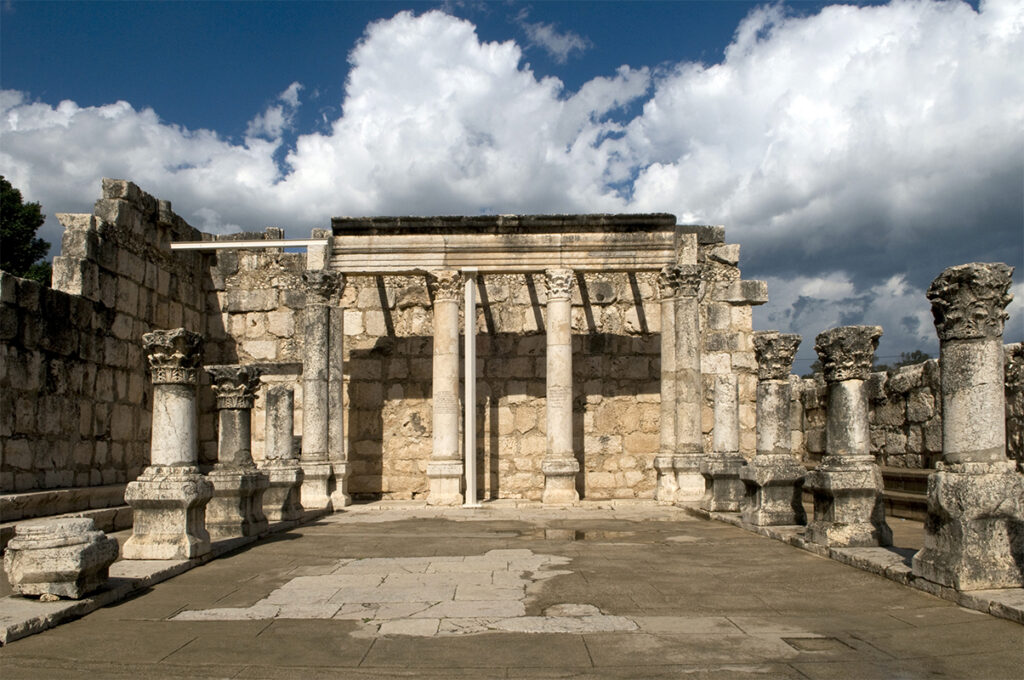The book entitled “Backgrounds of Early Christianity” by Everett Ferguson is a comprehensive survey of historiographical topics centered around the Mediterranean world of the first century. While topics span subject matter that primarily concentrated on what the first-century Christian world looked like within its historical setting, the book provides a limited and topical view of what significant events preceded it. Namely, the political and military histories to explain how and why ancient Empires flooded the area to achieve their objectives and interests. From historical Macedonia that gave rise to the Diadochi and its Ptolemaic and Seleucid empires to Rome and its rulership through conquest, administration, and oppression were conditions that set the context of what transpired during the first century.
Introduction
The historical conditions present during this period were not just political and militaristic. There were enormously significant social, cultural, religious, and philosophical advances favorable and corruptive. Altogether they were imported into the worlds of early Judaism and Christianity that had a direct and significant bearing upon lifestyle, language, education, and overall social order. While these conditions and pressures weighed heavily on the people of ancient Judeo-Christian development, the States, or governing bodies, changed from one to another, all having competing interests over time. Over time, from all geographical directions, there remained a persistent convergence of imported good and evil that imposed circumstances orchestrated upon the region that were not as deeply applied elsewhere beyond the perimeter of the Mediterranean.
Structure & Substance
Throughout the historical context of early Christianity, interwoven was the background of Greek culture, Roman authority, and their religious practices deeply rooted in ancient paganism. These key areas had a significant bearing on how society conducted itself while integrated within Jewish and Christian life. From government to everyday families in the area, social structures placed enormous weight upon how laws were originated and implemented. Local and regional economies required the support of governing authorities to provide stability for mixed cultures to form and produce the human outcomes sought by often unwanted influences. Intermingled within Jewish and Christian traditions were the new and advancing forms of thought and expression. When considering the reach of influential Greek and seductive Roman pressures brought to the region, there is a wide swath of social conditions that placed weight upon individuals and interrelated societies between Jews and neighboring nations.
The text in this review covers numerous areas of interest. From the mundane to the controversial, there are categories of social constructs that would take a long period to absorb and understand to recognize what lasting effect they had upon early Christianity. Military, law, slavery, trade, friendships, morality, family life, economies, taxes, personal attire, entertainment, education, athletics, music, art, literature, language, and so on are just the beginning of what deeply invaded the Jewish way of life among early Christians of the first century. Fundamental assumptions about the nature of human existence translated into how people of first-century Christianity were to live their lives.
Modes of expression were downstream from cultural beliefs that formed cultures of the first century. It is not accurate to conclude from the text that a single culture was formed to define a single set of beliefs. Yet, there were forms of European, Egyptian, and Aramaic lifestyles that shaped various categories of daily activity and the presence of influences and conditions by which they existed. It can be concluded that a primitive form of civilization emerged differently than what Yahweh earlier designed by covenantal intent with the nation of Israel. After the exilic period of the Jews and their return to build the second temple, the mandate of the Jews was transformed. There was no longer to be a kingdom of priests for the nations. Instead, the nations would intersperse throughout Mediterranean territories and Palestine, while the diaspora also added to the national incoherence of Israel.
The national purpose of the twelve tribes of Israel gave way to early Christianity with its twelve apostles of the Church. As such, the book covers the framework of cultural categories that formed and supported the primitive civilization of the region with numerous counter-intuitive specifics. For example, the range and quantity of gods served and worshipped among the Greeks were accepted and assimilated into Roman society, inhabiting its various conquered regions to include Israel. The polytheism of the time was an offset to Judaic and Christian thought yet was in place to construct the framework of social existence. Gentile education brought language, entertainment, holidays, and economic life embraced by much of the people of Israel and early Christianity.
The book covers at significant depth the formation and presence of numerous religious and philosophical beliefs that existed within first-century Christianity. These beliefs translated into groups of ideas and organizations stemming from Hellenistic and Roman thought. More specifically, the distinctions between religious expression and philosophical thought were presented as a clear and altogether foreign means of social interaction with an alien understanding of the world in which they lived. Philosophy and religion among the Greeks and Romans were often intertwined, with deities worshipped involving prayers, hymns, offerings, and observances that corresponded to popular social views.
Compared to other sections of the book, the author wrote at significant length and detail about the historical religions and philosophies of the time. The range of subject matter around these topics was given roughly equal weight around the other surrounding subjects of political histories, society, culture, early Judaism, and Christianity. It is entirely fitting that the author places an emphasis upon the philosophies and religions of the Gentiles who invaded Israel to provide the relevant discussions to follow. While the text serves as a useful handbook reference to get a clear understanding of specific subject matter, it is best to first read it through from beginning to end. The book works as a dictionary of topics researched, but it is best to understand the preceding and succeeding context. Before the discussion around first-century Judaism and emergent Christianity, the cultural context and background of Roman and Greek religion and philosophy are critical to recognize and understand. Especially around the time of Christ and the later missionary journeys of the apostle Paul throughout Asia Minor.
The spiritual world of false and foreign gods was revered and celebrated by many among the Gentile nations in and around Israel. The characteristics of foreign gods were personified and anthropomorphic in nature to largely serve a functional purpose that involved bartering. Especially among the Greek gods such as Artemis, Salus, Libertas, and Victoria, in exchange for reverence, worship, and service, the gods were to bestow benevolent outcomes to the efforts of Greco-Roman occupants of the Mediterranean world. Further around ancient and foreign gods were cults formed that organized around “sacramental” activities and roles to include rituals, festivals, sacrifices, and more. The book clarifies the personal practices of Greco-Roman religion and cults formed for deeper levels of devotion. The book is organized with topical partitioning that makes it clear and easy for readers to compare for further exploration and research.
The author presents a thorough and comprehensive section about the Greco-Roman philosophies of early Christianity. Philosophies that were often stemming from individual, influential, outspoke thought figures included Plato, Socrates, Aristotle, and numerous others. The book does an exceptional job at chronologically lining up what the systems of philosophical methods of understanding were to include its factions and derivative offshoots of Greco-Roman thinking. Separate from the intellectual figures were free-standing systems of belief about interpreted reality and the human condition. Namely, topics and originators of skepticism, cynicism, stoicism, epicureanism, and various others stand out in the book to situate their meaning amid the arrival and development of Christianity. The author makes it necessary to understand the extensive body of Greco-Roman schools of philosophy to recognize the background conditions in which Judaism and Christianity co-existed together.
From 620 pages of the text, the sections on early Judaism and formative Christianity equal roughly 36% of the total subject matter (220-pages between them). With the former two-thirds of the book’s material, a full and widened view of numerous historical factors set the backdrop and circumstances by which each becomes understood. Since Judaism itself extends back well beyond Alexander the Great and the conquests of Rome, the author covers these periods and earlier toward the intertestamental period.
Various ancient manuscripts accompany the historical authors of Judaism to gain a high degree of confidence about historical events, people, and developments. From the Persian period (538-332 B.C.) to the Roman period (63 B.C.), Jewish literature and authors provide source materials by which readers derive reliable historical facts around took place before the arrival of Christianity. The Jewish context within Israel is fundamental to understanding what occurred during the emergence and development of Christianity. The specific details in which Old and New Testament historical events occurred are written about the author by Jewish literature, both canonical and extra-biblical. A walkthrough of the Apocrypha, pseudepigrapha works, the Dead Sea Scrolls and various writings illustrate what forms or genres of Jewish literature covered history. A history by which readers gain an understanding of what led up to the intertestamental period. The time of Judaism during the first century is interconnected with Christianity in the ancient world. It is better to understand what categories of Jewish life existed throughout Judaism during the first century and who the major groups were during the time. These groups prominent within Judaism help the reader to understand what religious organizations and figures populated the New Testament scenes given within the gospels. Such as to include Pharisees, Sadducees, Herodians, Zealots, Samaritans, Essenes, and others, like the Sanhedrin and Rabbis, the prototypical organization of the Church and its roles arose to provide later and further context around roles, functions, and responsibilities. The ways in which Jewish religious authorities organized and were operated are covered in-depth down to different beliefs, whether they contradict or complement each other.
When pressing into these areas of first-century Judaism, it is informative to collect a running view of what transpired until Jewish Christianity. The author presents numerous meta details around literature, archaeological artifacts, and historical records that accompany biblical facts through the gospels and various epistles. References to visual artifacts like architectural remnants, coinage, papyri, inscriptions, tombs, and the writings of first-century authors altogether provide a composite picture of early Christianity.
Conclusion
This book serves as an ongoing standing reference for continuing biblical and theological studies. It contains highly valuable reference material with citations for research to broaden and deepen historical and technical depth. It is highly recommended in both printed and digital copies to efficiently absorb what materials were compiled here for the reader to further explore substantive meaning around early Christianity and the biblical text.















